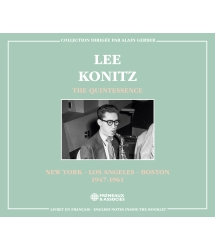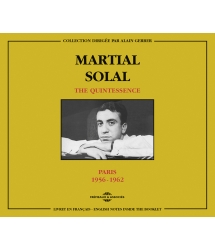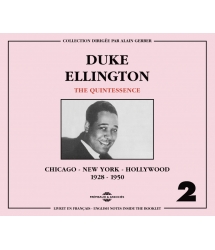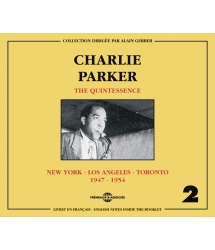- Our Catalog
- Philosophy
- Philosophers of the 20th century and today
- History of Philosophy (PUF)
- Counter-History and Brief Encyclopedia by Michel Onfray
- The philosophical work explained by Luc Ferry
- Ancient thought
- Thinkers of yesterday as seen by the philosophers of today
- Historical philosophical texts interpreted by great actors
- History
- Books (in French)
- Social science
- Historical words
- Audiobooks & Literature
- Our Catalog
- Jazz
- Blues
- Rock - Country - Cajun
- French song
- World music
- Africa
- France
- Québec / Canada
- Hawaï
- West Indies
- Caribbean
- Cuba & Afro-cubain
- Mexico
- South America
- Tango
- Brazil
- Tzigane / Gypsy
- Fado / Portugal
- Flamenco / Spain
- Yiddish / Israel
- China
- Tibet / Nepal
- Asia
- Indian Ocean / Madagascar
- Japan
- Indonesia
- Oceania
- India
- Bangladesh
- USSR / Communist songs
- World music / Miscellaneous
- Classical music
- Composers - Movie Soundtracks
- Sounds of nature
- Our Catalog
- Youth
- Philosophy
- News
- How to order ?
- Receive the catalog
- Manifesto
- Dictionnary











- Our Catalog
- Philosophy
- Philosophers of the 20th century and today
- History of Philosophy (PUF)
- Counter-History and Brief Encyclopedia by Michel Onfray
- The philosophical work explained by Luc Ferry
- Ancient thought
- Thinkers of yesterday as seen by the philosophers of today
- Historical philosophical texts interpreted by great actors
- History
- Books (in French)
- Social science
- Historical words
- Audiobooks & Literature
- Our Catalog
- Jazz
- Blues
- Rock - Country - Cajun
- French song
- World music
- Africa
- France
- Québec / Canada
- Hawaï
- West Indies
- Caribbean
- Cuba & Afro-cubain
- Mexico
- South America
- Tango
- Brazil
- Tzigane / Gypsy
- Fado / Portugal
- Flamenco / Spain
- Yiddish / Israel
- China
- Tibet / Nepal
- Asia
- Indian Ocean / Madagascar
- Japan
- Indonesia
- Oceania
- India
- Bangladesh
- USSR / Communist songs
- World music / Miscellaneous
- Classical music
- Composers - Movie Soundtracks
- Sounds of nature
- Our Catalog
- Youth
- Philosophy
- News
- How to order ?
- Receive the catalog
- Manifesto
- Dictionnary
5/7th of June, 1962
FRANK SINATRA
Ref.: FA5470
EAN : 3561302547022
Label : Frémeaux & Associés
Total duration of the pack : 1 hours 19 minutes
Nbre. CD : 1
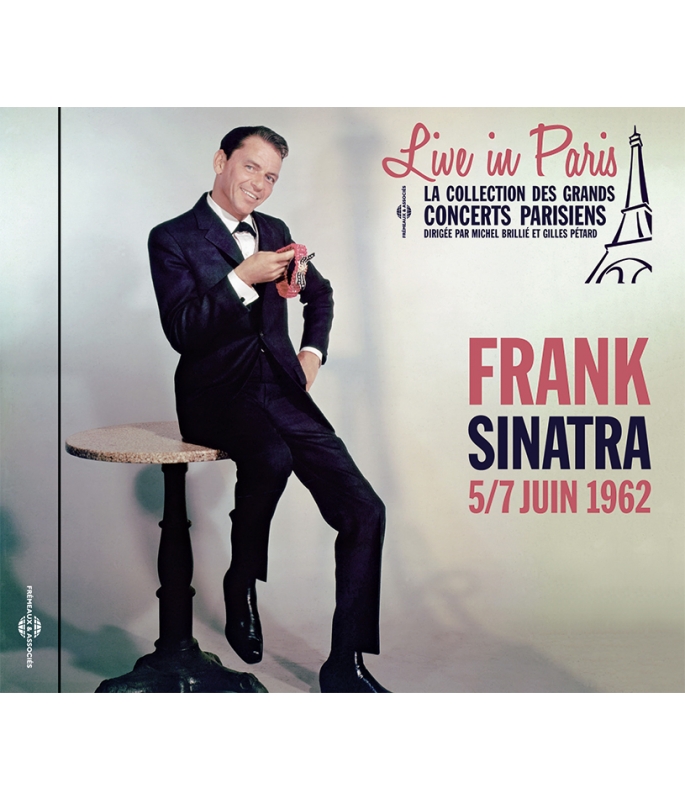
5/7th of June, 1962
Frank Sinatra was no doubt the most famous crooner of the 20th century. Recorded at the Lido and the Olympia in Paris in June 1962, this was the first visit to the French capital by the man they called “The Voice”, and his impeccable shows and rare professionalism recall the best in American entertainment… A great Sinatra, “live”! Patrick FRÉMEAUX
The Live in Paris collection by Michel Brillié allows listeners to hear previously-unreleased recordings (made at concerts and private- or radio-sessions) by the great 20th stars in jazz, rock & roll and song. These “live” takes, and the artists’ rapport with their audiences, gives these performances an additional soul and sensibility in counterpoint to the rigorous demands of studio recordings. Particular care was taken when restoring the sound of these tapes in order to meet CD standards while preserving the original colours of the period. Patrick FRÉMEAUX & Gilles PÉTARD
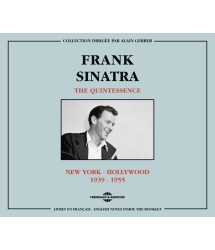
NEW YORK - HOLLYWOOD 1939-1955
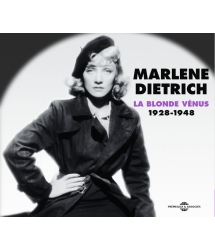
LA BLONDE VENUS 1928 - 1948
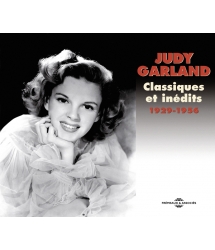
CLASSIQUES ET INEDITS 1929 - 1956
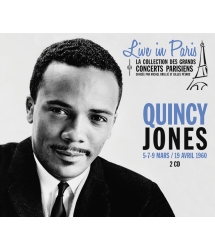
5-7-9 MARS / 19 AVRIL 1960




-
PisteTitleMain artistAutorDurationRegistered in
-
1Introduction by Louis MerlinLouis MerlinLouis Merlin00:00:211962
-
2Goody GoodyFrank Sinatra/Bill Miller/Al Viola/Ralph Pena/Irv Cottler/Emil Richards/Harry KleeJohnny Mercer00:01:191962
-
3ImaginationFrank Sinatra/Bill Miller/Al Viola/Ralph Pena/Irv Cottler/Emil Richards/Harry KleeJohnny Burke00:02:321962
-
4At Long Last LoveFrank Sinatra/Bill Miller/Al Viola/Ralph Pena/Irv Cottler/Emil Richards/Harry KleeCole Porter00:02:301962
-
5Moonlight In VermontFrank Sinatra/Bill Miller/Al Viola/Ralph Pena/Irv Cottler/Emil Richards/Harry KleeJ. Blackburn00:03:261962
-
6Without A SongFrank Sinatra/Bill Miller/Al Viola/Ralph Pena/Irv Cottler/Emil Richards/Harry KleeB. Rose00:02:541962
-
7Day In Day OutFrank Sinatra/Bill Miller/Al Viola/Ralph Pena/Irv Cottler/Emil Richards/Harry KleeJohnny Mercer00:02:351962
-
8I've Got You Under My SkinFrank Sinatra/Bill Miller/Al Viola/Ralph Pena/Irv Cottler/Emil Richards/Harry KleeCole Porter00:03:011962
-
9I Get A Kick Out Of YouFrank Sinatra/Bill Miller/Al Viola/Ralph Pena/Irv Cottler/Emil Richards/Harry KleeCole Porter00:03:121962
-
10The Second Time AroudFrank Sinatra/Bill Miller/Al Viola/Ralph Pena/Irv Cottler/Emil Richards/Harry KleeSammy Cahn00:03:141962
-
11Too Marvelous For WordsFrank Sinatra/Bill Miller/Al Viola/Ralph Pena/Irv Cottler/Emil Richards/Harry KleeJohnny Mercer00:01:481962
-
12My Funny ValentineFrank Sinatra/Bill Miller/Al Viola/Ralph Pena/Irv Cottler/Emil Richards/Harry KleeLorenz Hart00:02:561962
-
13In The Still Of The NightFrank Sinatra/Bill Miller/Al Viola/Ralph Pena/Irv Cottler/Emil Richards/Harry KleeJ. Trent00:03:401962
-
14April in ParisFrank Sinatra/Bill Miller/Al Viola/Ralph Pena/Irv Cottler/Emil Richards/Harry KleeE.Y. Harburg00:02:331962
-
15You're Nobody Till Somebody Loves YouFrank Sinatra/Bill Miller/Al Viola/Ralph Pena/Irv Cottler/Emil Richards/Harry KleeJ. Cavanaugh00:04:191962
-
16Monologue They Can't Take That Away From MeFrank Sinatra/Bill Miller/Al Viola/Ralph Pena/Irv Cottler/Emil Richards/Harry KleeG And I Gerschwin00:03:211962
-
17All The WayFrank Sinatra/Bill Miller/Al Viola/Ralph Pena/Irv Cottler/Emil Richards/Harry KleeSammy Cahn00:02:201962
-
18ChicagoFrank Sinatra/Bill Miller/Al Viola/Ralph Pena/Irv Cottler/Emil Richards/Harry KleeFred Fischer00:02:301962
-
19Night And DayFrank Sinatra/Bill Miller/Al Viola/Ralph Pena/Irv Cottler/Emil Richards/Harry KleeCole Porter00:04:111962
-
20One For My BabyFrank Sinatra/Bill Miller/Al Viola/Ralph Pena/Irv Cottler/Emil Richards/Harry KleeJohnny Mercer00:05:561962
-
21I Could Have Danced All NightFrank Sinatra/Bill Miller/Al Viola/Ralph Pena/Irv Cottler/Emil Richards/Harry KleeA.J. Lerner00:02:481962
-
22A Foggy DayFrank Sinatra/Bill Miller/Al Viola/Ralph Pena/Irv Cottler/Emil Richards/Harry KleeG. And I. Gerschwin00:02:431962
-
23Ol Man RiverFrank Sinatra/Bill Miller/Al Viola/Ralph Pena/Irv Cottler/Emil Richards/Harry KleeOscar Hammerstein II00:03:581962
-
24The Lady is A TrampFrank Sinatra/Bill Miller/Al Viola/Ralph Pena/Irv Cottler/Emil Richards/Harry KleeLorenz Hart00:04:021962
-
25I Love ParisFrank Sinatra/Bill Miller/Al Viola/Ralph Pena/Irv Cottler/Emil Richards/Harry KleeCole Porter00:03:051962
-
26Come Fly With MeFrank Sinatra/Bill Miller/Al Viola/Ralph Pena/Irv Cottler/Emil Richards/Harry KleeSammy Cahn00:03:511962
Frank Sinatra Live in Paris FA5470
Live in Paris
La collection des grands concerts parisiens
Dirigée par Michel Brillié et Gilles Pétard
FRANK SINATRA 5/7 JUIN 1962
Frank Sinatra Live in Paris
5/7 Juin 1962
Par Michel Brillié
« Tu le vois ?
- Toujours pas. »
Napo Boscrédon est fébrile en ce début Juin 1962. Il fait l’aller-retour entre la rue Caumartin et les coulisses de l’Olympia où Jean-Michel Boris, autre collaborateur fidèle du music-hall parisien, ronge son frein. Ce n’est pas une mince affaire : ils attendent la star des stars, le crooner des crooners, la Voix, The Voice…Frank Sinatra. C’est la première fois que le chanteur passe à Paris.
« On l’attendait et on savait que ce n’était pas un « client » facile. Je crois que son avion avait du retard. …/… Et puis soudain s’encastre dans la rue Caumartin une immense limousine, six portes, noire, rutilante. Trois ou quatre gardes du corps en descendent. Costard, lunettes noires, look des Blues Brothers. Ils jettent un coup d’œil à droite, à gauche, puis ouvrent la porte. On était là, le petit doigt sur la couture du pantalon.
Un homme de taille moyenne sort, avec un petit chapeau et un regard bleu acier. Il nous salue de loin et file directement sur scène. Inutile de dire que l’orchestre se tenait à carreau. Tout le monde était là, prêt à partir, après avoir bossé les partitions comme des malades. Sinatra se plante devant le micro et fait un signe de la tête : « My name is Frank Sinatra. One, two, three… » Et le voilà qui « file » l’intégrale de son répertoire, dans l’ordre, sans regarder qui que ce soit, sans une hésitation, sans un arrêt, sans un mot. On n’en revenait pas. A la fin, il tourne les talons : « A ce soir ». Professionnel à ce point, c’est presque inhumain. » 1
En ce début des années soixante, Frank Sinatra est au sommet de son art. Après son « trou noir » pendant les années cinquante, il a renoué avec le succès. Il vient de créer son propre label, « Reprise » ; au cinéma, il a fait un carton dans « Ocean’s Eleven » (L’inconnu de Las Vegas) en compagnie de sa garde rapprochée, The Rat Pack - Dean Martin, Sammy Davis Jr., Peter Lawford. Il a ardemment soutenu le candidat démocrate John Fitzgerald Kennedy pendant la campagne présidentielle de 1960, allant jusqu’à détourner et réenregistrer l’un de ses succès « High Hopes » afin d’en faire l’hymne de la campagne. JFK lui a ensuite confié l’organisation de son gala d’investiture où les plus grands artistes américains ont été présents : Ella Fitzgerald, Mahalia Jackson, Sidney Poitier, Nat King Cole, Leonard Bernstein…
Il y a cependant un point noir en ce printemps 62. Sinatra démarre l’année avec des états d’âme. La relation avec le président Kennedy s’est nettement détériorée. En mars 1962, JFK devait passer une nuit dans la maison du chanteur à Palm Springs, à l’occasion d’une visite officielle en Californie. Sinatra s’était mis en quatre pour redécorer dignement sa demeure. Il avait même fait poser par anticipation une plaque de bronze au-dessus du lit ou Kennedy devait dormir sur laquelle était inscrit : « John Kennedy a dormi ici ». Mais Robert Kennedy, ministre de la Justice et frère du président, y mit son veto. Les liens de Frank avec la mafia, notamment avec le « capo » Sam Giancana, qui était un hôte régulier de Sinatra à Palm Springs, faisaient tache pour l’intègre Bobby. Et c’est finalement chez le républicain Bing Crosby que Kennedy séjournera ; Sinatra en sera durablement ulcéré, passant progressivement dans le camp républicain.
Après cette gifle de Kennedy le mettant à l’écart, Sinatra décide pour redorer son blason de faire une tournée internationale caritative, afin de montrer un aspect plus humain de sa personnalité. L’itinéraire comprend trente étapes autour du monde, s’étalant du 30 Avril au 17 Juin 1962, et partant de Mexico pour finir à Monte-Carlo. Pendant ce laps de temps, Frank Sinatra va récolter plus d’un million de dollars pour diverses organisations venant en aide à l’enfance déshéritée, hôpitaux, orphelinats, écoles spécialisées etc.
Quand « Ol’ Blue Eyes » (« le crooner aux yeux bleus » surnom du chanteur) arrive à Paris pour cette tournée dont il assume tous les frais, Frank Sinatra est déjà passé par le Japon, Hong-Kong, Israël, la Grèce, l’Italie… Il se produit tout d’abord le 5 Juin au célèbre cabaret parisien Le Lido sous le parrainage de la radio Europe Numéro Un. C’est d’ailleurs Louis Merlin, Directeur Général et fondateur de la station, qui le présente le premier au public parisien venu applaudir cette immense légende du show business américain. Aux premières tables se presse le Tout Paris des grands jours, Tino Rossi, Henri Salvador, Fernand Reynaud, Juliette Gréco, présents pour écouter « The Voice » - et accomplir une bonne action. En effet, les bénéfices de cette soirée de gala vont être reversés à deux associations françaises, l’Ordre Hospitalier Saint-Jean de Dieu, et Cœurs d’Enfants, dans laquelle Louis Merlin est très impliqué.
La prestation de Sinatra ce soir là, comme 2 soirs plus tard à l’Olympia, est d’une précision millimétrée. Accompagné par le sextet de Bill Miller, qui comporte Emil Richards au vibraphone, Al Viola à la guitare, Irv Cottler à la batterie, Ralph Pena à la contrebasse et Harry Klee à la flûte, à la clarinette et au saxophone, Frank rentre sur scène, smoking noir, nœud papillon noir, pochette rouge ; il a une rose à la main qu’il lance sur les genoux d’une spectatrice. Il va pendant une heure et demie interpréter ses plus grands succès sur des arrangements de Neal Hefti. Il a à l’époque 46 ans, dont plus de 20 de carrière.
Et même si le chanteur se laisse aller à quelques « jokes » caustiques lors de son monologue de mi- concert, l’improvisation n’est pas de mise. Une anecdote du show qu’il donnera à Londres, quelques jours plus tard, en est révélatrice.
David Jacobs, personnalité de radio britannique devait présenter l’un de shows londoniens du chanteur. Il raconte ce moment dans le livre «Sinatra », de Richard Havers :
« Je vais le rencontrer dans sa loge. Je le trouve encore en chemise et en caleçon, en train de se préparer avec son valet de chambre. Sous mes yeux, ce dernier prend une chaise et fait monter Frank Sinatra sur la table pour l’aider à enfiler un pantalon incroyablement empesé…et une veste raide comme un plastron. Quand il en est redescendu, c’est tout juste s’il pouvait marcher, il avait l’air d’un pingouin, alors je lui ai demandé pourquoi il faisait ça. Il s’est penché vers moi et il a répondu : « Sur scène, je n’ai pas envie de ressembler à n’importe qui, comme vous, avec votre costume… » 2
Le Lido de Paris était – et est toujours – célèbre pour sa troupe de danseuses déshabillées, Les Bluebell Girls, qui incarnent la Parisienne élégante et sexy dans le monde entier. Sinatra le séducteur, qui a eu dans son lit les plus belles femmes de la terre, d’Ava Gardner à Marilyn Monroe, ne pouvait laisser passer l’occasion dans la ville la plus volage du globe. George Jacobs, son fidèle valet du moment, a conservé un souvenir vif de ce passage à Paris.
C’est à Paris que nous nous sommes le plus amusés. Des hordes de groupies françaises nous accueillaient alors que nous arpentions tranquillement la Ville Lumière avec une cohorte de Chrysler décapotables. Les plus belles étaient les Bluebell Girls du Lido, où se produisait Mr. S. Après le spectacle, beaucoup d’entre elles assistèrent à une fiesta organisée dans nos suites de l’hôtel George V. Mike Romanoff, le célèbre restaurateur, nous emmena dans toutes les tables célèbres. Il connaissait Claude Terrail de la Tour d’Argent. Le restaurant avec vue sur Notre Dame était réputé pour sa cave et son canard au sang. Mais Mr. S. était mal à l’aise en présence du maitre des lieux, séducteur impénitent qui avait eu des aventures avec tout le monde, y compris Ava et Marilyn. Mr. S. y but du thé, commanda un steak et ne s’attarda pas. Je lui avais déniché une boite de saucisses et de haricots Campbell chez Fauchon. Je n’oublierai jamais la scène : Mr. S. ouvrant la boite à 5 heures du matin et donnant la becquée, cuillerée après cuillerée, à deux Bluebell Girls… » 3
Sinatra, une boîte de conserve à la main, dans la capitale mondiale de la gastronomie, voilà qui en dit long sur le peu d’intérêt que le chanteur accordait à Paris, même s’il y retournera à quatre autres reprises, de 75 à 91, année où il se produit au Palais des Congrès. La réalité, c’est que « Ol’ Blue Eyes » déteste les voyages : l’avion l’angoisse, et il préfère Little Italy, le quartier italien de New-York, à Naples, Las Vegas à Monte-Carlo, Palm Springs à Marrakech… Un vrai touriste américain, en quelque sorte.
Vifs remerciements à Michel Macaire, ancien président des Amis de Frank Sinatra, pour son aide précieuse dans la réalisation de ce CD.
Dédié à Claude Boquet, Bill Dubois, Jean Claude, Philippe Moch et toute la bande.
Michel BRILLIÉ
© FRÉMEAUX & ASSOCIÉS 2014
1. « Olympia, 50 ans de music hall » par Jean-Michel Boris, Jean-François Brieu, Éric Didi (Éditions Hors Collection, 2003).
2. « Sinatra », par Richard Havers, traduction Michel Beauvais, Nicolas Blot, Sébastien Dachin, (Pearson Pratique, 2005).
3. « Mr S., Ma Vie avec Frank Sinatra » par George Jacobs, traduction Laurence Nectoux et Véronique Dreyfus (Éditions Michel Lafon, 2004).
FRANK SINATRA Live in Paris
5/7 June 1962
By Michel Brillié
“You see him ?
- Still nothing.” 1
Napo Boscrédon is edgy on this day in early June 1962 in Paris. He goes back and forth from Caumartin Street to the backstage of the Olympia Theater. There, Jean Michel Boris, one of the faithful staff members of the famous Parisian hall, is anxiously waiting. It is not a small matter: they are expecting the star of stars, the ultimate crooner, The Voice…Frank Sinatra. The singer is to perform in the French capital for the first time.
“We were waiting and waiting, and we knew he wasn’t an easy person to deal with. I think his plane was delayed. And then, all of a sudden, a huge shiny black six-door limo darts into Rue Caumartin. Three or four bodyguards step out. Black suits and dark glasses, like the Blues Brothers, they look left and right, and then open the door of the limo. We were all there, standing to attention.
A mid-sized man gets out, a small hat on his head and steel blue eyes. He nods at us from afar and heads straight to the stage. No need to say that the band was on its best behavior. Everybody was here, rearing to go, knowing the music scores to perfection. Sinatra steps up to the mike and tips his hat: “My name is Frank Sinatra. One, two, three…” And he runs through the entire show, without looking at anyone, without hesitating, or stopping, without uttering a word. We were completely floored. Finally, he turns around and says “See you tonight”. Such a pro, it was almost inhuman.” 1
At the beginning of the sixties, Frank Sinatra was back at the top. After the “black hole” of the fifties, he was once again in demand. He had just created his own record label, “Reprise”; he had just had a huge movie hit with “Ocean’s Eleven” along with the Rat Pack Gang - Dean Martin, Sammy Davis Jr., Peter Lawford.
Sinatra strongly supported John F. Kennedy, the democrat candidate in the presidential campaign of 1960. He even adapted and re-recorded one of his hits, “High Hopes” and made it the official hymn for the young senator’s march to presidency. JFK in turn gave Sinatra the task of arranging the inauguration gala, with the top American artists of the period, Ella Fitzgerald, Mahalia Jackson, Sidney Poitier, Nat King Cole, and Leonard Bernstein.
There was however a dark shadow cast on this spring of ’62. His relationship with President Kennedy had greatly deteriorated. In March, during an official visit to California, JFK was to spend the night at the singer’s home in Palm Springs. Sinatra went to a great deal of trouble to redecorate his summer home to suit the occasion. He even had a bronze plaque set above the bed where Kennedy was to rest that read “Kennedy slept here”. But Robert Kennedy, the US General Attorney and the President’s brother, vetoed the project. The links binding Frank with members of the Mafia, such as Sam Giancana, a regular guest of Sinatra in Palm Springs, did not fit the ethics of Brother Bobby. In the end, Kennedy stayed at republican supporter Bing Crosby’s place; Sinatra was deeply hurt and gradually moved to the Republican side.
After this humiliation banning him from the Kennedy clan, Sinatra decided to rehabilitate his tarnished image by doing a three month world tour to benefit underprivileged children, in order to show a more humane aspect of his personality. The itinerary included thirty shows taking place from April 30 to June 17, 1962, starting in Mexico City and ending in Monte Carlo. During this time, Frank Sinatra collected over one million dollars to help charity organizations, hospitals, orphan homes, special schools etc.
When « Ol’ Blue Eyes » set foot in Paris for this tour which he entirely paid himself, Frank Sinatra had already been through Japan, Hong-Kong, Israel, Greece, and Italy. The first show was scheduled on June 5th at the famous Parisian cabaret, “Le Lido de Paris” sponsored by Europe One Radio Station. Louis Merlin, general manager and founder of the station, was the first Frenchman to introduce Sinatra to the Parisian audience that had come to acclaim this legend of American show-business. In the first row of dimly lit tables sat the “Tout Paris”, the elite of the city’s jetsetters: Tino Rossi, Henri Salvador, Fernand Reynaud, Juliette Gréco…They all had come to enjoy “The Voice” – and to do a good deed. For all the benefits of this gala night would be given to two French charity organizations, “Ordre Hospitalier Saint-Jean de Dieu” and “Cœurs d’Enfants”, in which Louis Merlin was deeply involved.
That night, as it will be two nights later at the Olympia Theater, Sinatra’s show is a marvel of precision. The singer is backed by Bill Miller’s sextet, with Emil Richards (vibraphone), Al Viola (guitar), Irv Cottler (drums), Ralph Pena (bass) and Harry Klee (flute, clarinet and saxophone). Frank enters the stage in a black tuxedo, a bow-tie and a red rose in hand. He elegantly throws the flower on the lap of a young parisienne. And, for an hour or more, he goes through a selection of his songs arranged by Neal Hefti. At that moment, Sinatra is 46 years old, and has a twenty years career.
Even if the artist dares some risqué jokes in his mid-show monologue, improvisation is not his thing. A revealing anecdote of this attitude takes place a few days later in his London performances.
A famous British radio personality, David Jacobs, is the emcee for one of the singer’s London shows. This is how he tells the story in “Sinatra”, a book by Richard Havers (DK Publishing, 2004) :
“Before the show, I was ready in my suit and I went to meet him in his dressing room and he was not yet ready, sitting there in his shirtsleeves and underpants with his valet. While I was there, the valet helped him up on to a chair and then onto a table. Then he helped him into his trousers with really stiff legs, and a stiff jacket. Once back down he could only walk around like a penguin! It seemed really difficult for him to move well, so I asked him why he did it when he walked like that. He bent over and quietly said to me “I know my voice is in good order, but when I go onto that stage I don’t want to look like you do in your suit!”
The Lido de Paris was, and still is, known for its chorus line of skimpily clad dancers, The Bluebell Girls. They are the symbol of the elegant and sexy parisienne throughout the world. Sinatra the seducer, the man who had been with the most beautiful women on earth, from Ava Gardner to Marilyn Monroe, could not bypass the opportunity. George Jacobs, his one-time faithful valet, remembers the episode vividly.
“We had our most fun in Paris. There were hordes of waiving Frenchwomen as we toured around the City of Lights in a caravan of Chrysler convertibles. The most beautiful of these were the Bluebells, the chorus girls of the Lido on the Champs Elysées, where Mr. S performed. A lot of them came for a big after-party in our suites at the George V, which was Hollywood headquarters in Paris. Mike Romanoff took us to all the famous restaurants. He knew Claude Terrail of the Tour d’Argent. The restaurant, maybe the most elegant in the world, overlooking Notre Dame, was renowned for its wine cellar and its pressed duck. However, Mr. S was uncomfortable around Terrail, a dashing world-class polo player and playboy, who had had affairs with everyone, including Ava and Marilyn. Mr. S drank tea, ate a steak, and left early. I had found him some Campbell’s Franks and Beans at Fauchon, a luxury grocery store that stocked American treats. I’ll never forget his opening a can at five A.M. and feeding it, forkful by forkful, to two visiting Bluebelles.” 2
Frank Sinatra, a can of beans in hand, in the world capital of gastronomy, here’s a picture that tells a lot on his lack of interest for Paris. Even if he will return there on four other opportunities, from ‘75 to ‘91, when he appears at the Palais des Congrès. Truth be told “Ol’ Blue Eyes” hated to travel. Flying made him anxious, and he felt much better in ‘Little Italy’ in Manhattan than in Naples, much better in Las Vegas than in Monte Carlo, in Palms Springs than in Marrakesh… He was a true American tourist.
Sincere thanks to Michel Macaire, former president of “Les Amis de Frank Sinatra”, for his precious help in the production of this CD
Dedicated to Claude Boquet, Bill Dubois , Jean Claude, Philippe Moch and the gang
Michel BRILLIÉ
© FRÉMEAUX & ASSOCIÉS 2014
1. “Olympia, 50 ans de music hall” by Jean-Michel Boris, Jean-François Brieu, Éric Didi, Éditions Hors Collection, 2003.
2 “Mr. S: My Life with Frank Sinatra”, George Jacobs, William Stadiem, John Wiley & Sons, 2003.
1. Introduction by Louis Merlin 0’21
2. Goody, Goody (Johnny Mercer / Matty Malneck) 1’19
3. Imagination (Johnny Burke / Jimmy Van Heusen) 2’32
4. At Long Last Love (Cole Porter) 2’30
5. Moonlight in Vermont (John Blackburn / Karl Suessdorf) 3’26
6. Without a Song (Billy Rose - Edward Eliscu / Vincent Youmans) 2’54
7. Day In-Day Out (Johnny Mercer / Rube Bloom) 2’35
8. I’ve Got You Under My Skin (Cole Porter) 3’01
9. I Get a Kick Out of You (Cole Porter) 3’12
10. The Second Time Around (Sammy Cahn / Jimmy Van Heusen) 2’47
11. Too Marvelous for Words (Johnny Mercer / Richard Whiting) 1’48
12. My Funny Valentine (Lorenz Hart / Richard Rodgers) 2’56
13. In the Still of the Night (Jo Trent / Hoagy Carmichael) 3’40
14. April in Paris (Edgar Yipsel Harburg / Vernon Duke) 2’33
15. You’re Nobody Till Somebody Loves You (James Cavanaugh / Russ Morgan - Larry Stock) 4’19
16. Monologue / They Can’t Take That Away From Me (Ira Gershwin / George Gershwin) 3’21
17. All the Way (Sammy Cahn / Jimmy Van Heusen) 2’20
18. Chicago (That Toddling Town) (Fred Fisher) 2’30
19. Night and Day (Cole Porter) 4’11
20. One for My Baby (Johnny Mercer / Harold Arlen) 5’56
21. I Could Have Danced All Night (Alan Jay Lerner / Frederick Loewe) 2’48
22. A Foggy Day (Ira Gershwin / George Gershwin) 2’43
23. Ol’ Man River (Oscar Hammerstein II / Jerome Kern) 3’58
24. The Lady Is a Tramp (Lorenz Hart / Richard Rodgers) 4’02
25. I Love Paris (Cole Porter) 3’05
26. Come Fly With Me (Sammy Cahn / Jimmy Van Heusen) 3’51
Recorded by: Europe N°1 Technical Staff
Recording dates
Tracks 1 to 24: June 5, 1962
Tracks 25 & 26: June 7, 1962
Recording places
Tracks 1 to 24: Lido de Paris Cabaret, Paris, France
Tracks 24 & 25: Olympia Theater, Paris, France
Personnel
Frank Sinatra – Vocals
Bill Miller – Piano
Al Viola – Guitar
Ralph Peña – Bass
Irv Cottler – Drums
Emil Richards – Vibraphone
Harry Klee – Alto Saxophone, Flute
La collection Live in Paris :
Collection créée par
Gilles Pétard pour Body & Soul
et licenciée à Frémeaux & Associés.
Direction artistique et discographie :
Gilles Pétard et Michel Brillié.
Fabrication et distribution :
Frémeaux & Associés.
Frank Sinatra est sans doute le plus célèbre crooner du XXe siècle. Enregistré au Lido et à l’Olympia en juin 1962, il s’agit du premier concert à Paris de « The Voice », un show à la mécanique impeccable d’un rare professionnalisme, qui rappelle les fastes de l’entertainment américain. Un grand Sinatra live !
Patrick FRÉMEAUX
Frank Sinatra was no doubt the most famous crooner of the 20th century. Recorded at the Lido and the Olympia in Paris in June 1962, this was the first visit to the French capital by the man they called “The Voice”, and his impeccable shows and rare professionalism recall the best in American entertainment… A great Sinatra, “live”!
Patrick FRÉMEAUX
La collection Live in Paris, dirigée par Michel Brillié, permet de retrouver des enregistrements inédits (concerts, sessions privées ou radiophoniques), des grandes vedettes du jazz, du rock & roll et de la chanson du XXe siècle. Ces prises de son live, et la relation avec le public, apportent un supplément d’âme et une sensibilité en contrepoint de la rigueur appliquée lors des enregistrements studios. Une importance singulière a été apportée à la restauration sonore des bandes, pour convenir aux standards CD tout en conservant la couleur d’époque.
Patrick FRÉMEAUX & Gilles PÉTARD
The Live in Paris collection by Michel Brillié allows listeners to hear previously-unreleased recordings (made at concerts and private- or radio-sessions) by the great 20th stars in jazz, rock & roll and song. These “live” takes, and the artists’ rapport with their audiences, gives these performances an additional soul and sensibility in counterpoint to the rigorous demands of studio recordings. Particular care was taken when restoring the sound of these tapes in order to meet CD standards while preserving the original colours of the period.
Patrick FRÉMEAUX & Gilles PÉTARD
CD Frank Sinatra 5-7 juin 1962, collection "Live in Paris", Frank Sinatra © Frémeaux & Associés 2014.
